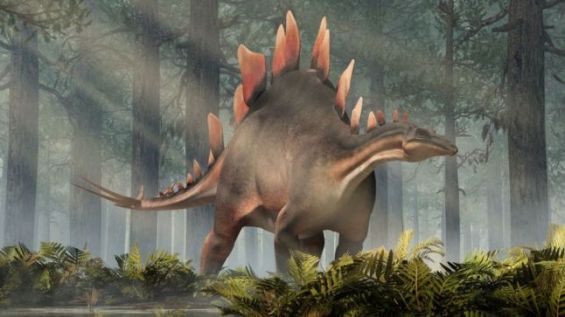Its fossils, composed of a handful of vertebrae and an upper arm bone, were studied by a team at the Natural History Museum in London. The team, led by Dr. Susannah Maidment, concluded that this is a new specimen that lived on our planet about 168 million years ago.
Fossils of Adratiklit Boulahfa, which means the «mountain lizard» in the Amazigh language (Adra for mountain and Tiklit for lizard) with a reference to Boulahfa, the place where the dinosaur’s fossils were found, are dated to the Middle Jurassic period, much earlier than most known Stegosaurs, which then indicates that this Moroccan dinosaur is the oldest Stegosaur ever found.

«The discovery of A. boulahfa is particularly exciting as we have dated it to the Middle Jurassic», Susannah Maidment told the Natural History Museum. «Most known Stegosaurs date from later in the Jurassic Period, making this the oldest definite Stegosaur described and helping to increase our understanding of the evolution of this group of dinosaurs», she explained.
An armored herbivorous dinosaur
Adratiklit was an armored herbivorous dinosaur and is part of the group of animals that includes Ankylosaurs and Stegosaurs, the study says. He would have lived on Gondwana, a former supercontinent, forming Laurasia, the other supercontinent.
Gondwana had eventually split into continental masses including Africa, South America, Australia and Antarctica. If Laurasia's Stegosaur remains are diverse and common, many have been found in rocks in North America, Asia, and Europe. Few fossils have been found on the continents formerly known as Gondwana.
The discovery of Adratiklit Boulahfa reinforces the theory, suggesting that the fossil record of armored dinosaurs in Gondwana is strongly biased by geological factors and search efforts. «What is exciting about this is that there could be many more armored dinosaurs to find in places that until now have not been excavated», Susannah Maidment said.

The Moroccan specimen, discovered southeast of Fez, remains «more closely related to European Stegosaurs like Dacentrurus and Miragaia than it is to the two genera already known from southern Africa».
A PhD student at the London Museum, Tom Raven, helped to establish the evolutionary relationships of the specimen, allowing paleontologists to understand the relationship between this new dinosaur and the known Stegosaurs. «Despite being from the African continent our phylogenetic analysis indicated that, surprisingly, Adratiklit is more closely related to European Stegosaurs than it is to the two genera known from southern Africa, Kentrosaurus and Paran thodon», he added.
The team hopes this discovery paves the way for other discoveries of new species that have lived on Gondwana. The discovery team will also travel to Morocco in the near future to look for additional fossils. The specimens described in this study, by Susannah Maidment, Thomas J. Ravena, Driss Ouarhache and Paul M. Barretta, are now part of the dinosaur collection at the Natural History Museum in London.





 chargement...
chargement...













